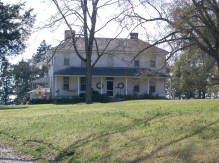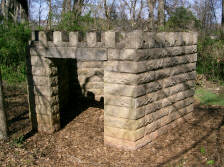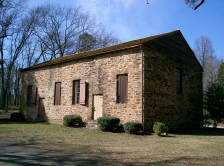Lake Hartwell
The Flood Control Act of 1950 authorized the building of Hartwell Dam and Reservoir as the second unit in the comprehensive development of the Savannah River Basin. The dam itself was to be constructed on the Savannah, some 17 miles to the southeast of the spot on the Tugaloo River, where Anderson and Oconee Counties intersected. Ten miles east of this spot, the Tugaloo formed a junction with the Seneca River, thus creating the Savannah.
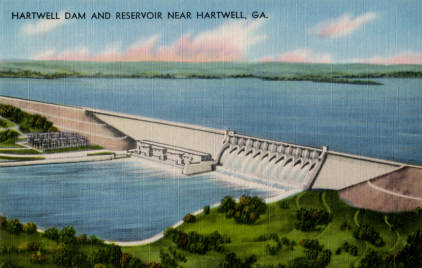 Full pond was to be 660 feet above sea level. The reservoir would extend up the Tugaloo almost to the existing Yonah Dam, up the Seneca to the confluence of the Little & Keowee Rivers, up the Little to Newry and up the Keowee to Old Pickens.
Full pond was to be 660 feet above sea level. The reservoir would extend up the Tugaloo almost to the existing Yonah Dam, up the Seneca to the confluence of the Little & Keowee Rivers, up the Little to Newry and up the Keowee to Old Pickens.
Contracts were awarded in late 1955, with work commencing within months. But, in late 1956 Clemson College, finally realizing the potential impact, objected to the damage that would result due to the impoundment of water, and work was halted. Since 1949, communications between College officials and the Corps had taken place concerning the proposed project, and it was only after the Board of Trustees pledged their cooperation in 1955, that contracts were let.
In 1956, the college reconsidered it’s position, proposing three alternate plans: Lowering the pool from 660 to 610 feet; diverting the Seneca River around endangered college property or receiving compensation for affected college lands and facilities.
Of prime concern was that the playing surface of the football stadium, unless protected, would be inundated by 18 feet of water.
One curious circumstance that surfaced during the restudy, was that only two years earlier, the US DA, unbeknownst to the Corp of Engineers, had conveyed 7,600 acres of bottomland along the Seneca River to Clemson. The same land deemed ‘irreplaceable’ during the 1956 negotiations.
Ultimately, the decision was made to build two earthen diversion dikes to protect Clemson property, which at that time lay almost totally in Oconee County. Work on the revised project resumed in 1957 and was completed in December 1963.
Keowee / Toxaway Project
The birth of the Keowee/Toxaway Project occurred in 1916 when the potential of the rugged area of northwestern South Carolina attracted the attention of engineers of Duke Power Company, then known as the Southern Power Company. The first civil engineering efforts in preliminary design were started then, resulting in actual purchases of key lands for the dam sites. In the early 1960s, Duke Power’s Design Engineering Department conceived the use of the Keowee/Toxaway area as a ‘multipurpose’ power development.
By early 1963 things began to happen! In mid-year, the South Carolina Land & Timber Corporation was formed for the purpose of acquiring land for the development.
Subsequently this Duke subsidiary became Crescent Land and Timber Corp, and is now Crescent Resources, Inc.
For the eighteen months between their establishment in July 1963, an continuing until the end of 1964, SC Land & Timber, very unobtrusively, acquired property throughout the project area, still without public knowledge of what was coming.
On January 1, 1965, Duke President W.B. McGuire, at a luncheon at the Clemson House, announced Duke Power Company’s ‘Keowee/Toxaway Project’. At that time the proposed project included only two nuclear reactors and did not include Bad Creek, with the estimated ultimate cost to be $700 million. The next day, at a luncheon jointly sponsored by the Oconee and Pickens County’s Planning and Development Boards, the announcement was repeated.
In September 1966 the Federal Power Commission licensed the project, followed in November 1967 by the Atomic Energy Commission. The name ‘Oconee Nuclear Station’ had become the commonly used, and later official, name of what would become the primary generating facility on Lake Keowee.
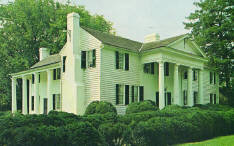
Ground breaking occurred, in April 1967, when South Carolina’s Governor, Robert McNair, triggered the ceremonial dynamite blast.
A jolt to Oconee came in 1968 when Clemson College officials, working with elected officials of Pickens, successfully annexed the majority of the campus into Pickens County, the line reverting to the center of Lake Hartwell.
Besides the campus itself, historical sites lost to Oconee included Andrew Picken’s Hopewell Plantation, John C. Calhoun’s Fort Hill, Old Stone Church and the site of Fort Rutledge.
